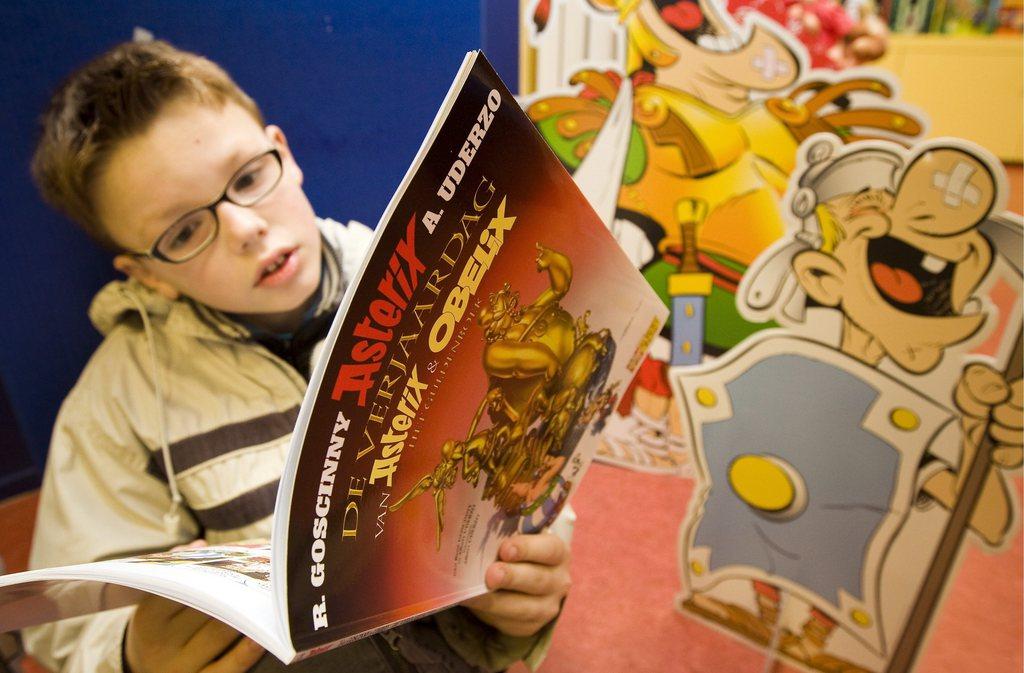Children’s publisher turns the page on cultural stereotypes

Once upon a time, the vast majority of books for children and young adults in German came from Western countries. In fact, that’s still the case – something an NGO wants to change by publishing works under the slogan, “Created in the World, Published in Switzerland”.
It all began in 1975: the NGO Public EyeExternal link, then known as the Bern Declaration, founded a working group on children’s literature. The aim was to look at what images of the “Third World” were portrayed in children’s books.
“It was a very different time,” says Sonja MathesonExternal link, director of Baobab Books. “Children’s literature was full of stereotypes about Native Americans and Africans.”

The working group developed into a project that publishes an annual list of recommendationsExternal link. Volunteers read new books and choose those that “offer insights into different cultures and religions, broaden horizons and identify the potential but also the problems raised when different cultures live together”.
“The book market changed during the 1980s,” Matheson says. It’s now unthinkable to see terms like “Negro King”, which appeared in a Pippi Longstocking book, dancing Native Americans or racist illustrations in children’s books.
“But what was still missing in books for children and young adults were authentic voices from the [southern hemisphere],” she says. “In addition to German originals, translations from Europe and the United States were still available, but no other regions of the world were represented.”
Linguistic bridge
Public Eye wanted to change this. Under the name Baobab Books, it entered the publishing market.
At first it looked for authors at international book fairs and through informal contacts whose work they translated into German. It now approaches authors directly and suggests books, instead of just translating what already exists.
“There are countries where the local book market doesn’t really work for us,” Matheson explains. “Therefore, it’s more productive to publish authors directly in German.”
As a result, about four books appear a year by authors from Asia, Latin America and Africa. To date, almost 90 titles from 35 countries have been published and more than 100,000 books have been sold in the past 15 years.
Matheson notes a great demand for Baobab’s bilingual booksExternal link. “These are a bridge to the German language for migrants in Switzerland,” she explains.
‘Mirror of society’
As for the issues and themes that shape German-language books for children and young adults today, Matheson says there have been many stories about escaping in recent years as well as books about Islam, headscarves or migration and identity in general.
“Children’s literature is always a mirror of society,” she explains.
Anyone who flicks through Baobab’s books quickly notices that they are very different from conventional books in Swiss bookstores. So is literature strongly influenced by culture? And can everything be sold in Switzerland or do some things not appeal to local tastes?
“There are books that simply wouldn’t be understood here,” Matheson admits. “There are also different ideas, depending on the country, about what counts as literary quality.”
But the real customers of Baobab Books – children – rarely have trouble with the books not being what they’re used to. “Children are generally very good at dealing with things being different.”

More
‘The ‘saviour child’ is a really popular motif’
(Translated from German by Thomas Stephens)

In compliance with the JTI standards
More: SWI swissinfo.ch certified by the Journalism Trust Initiative













You can find an overview of ongoing debates with our journalists here . Please join us!
If you want to start a conversation about a topic raised in this article or want to report factual errors, email us at english@swissinfo.ch.